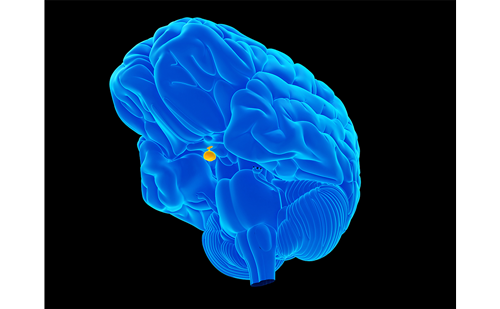Acromegaly is an endocrine disorder and is characterised by soft tissue enlargement and excessive skeletal growth with acral enlargement and coarse facial features. The incidence of acromegaly is approximately 3.3/1,000,000.0/year and the prevalence is 60/1,000,000.1 Although a rare condition, the clinical, economic and health-related quality of life (HRQoL) burden associated with acromegaly is considerable owing to its broad spectrum of co-morbidities as well as the need for lifelong management.
Acromegaly is an endocrine disorder and is characterised by soft tissue enlargement and excessive skeletal growth with acral enlargement and coarse facial features. The incidence of acromegaly is approximately 3.3/1,000,000.0/year and the prevalence is 60/1,000,000.1 Although a rare condition, the clinical, economic and health-related quality of life (HRQoL) burden associated with acromegaly is considerable owing to its broad spectrum of co-morbidities as well as the need for lifelong management. Acromegaly is diagnosed in approximately equal numbers of men and women, and the mean age at diagnosis for both sexes is in the early to mid-40s.2
The features of acromegaly develop slowly over decades, and diagnosis can be delayed up to 10 years after the onset of symptoms.3 Excessive levels of growth hormone (GH) and insulin-like growth factor-1 (IGF-1) cause major structural and functional cardiac changes, and as a result the disease has numerous clinical manifestations ranging from acral overgrowth to myocardial hypertrophy and diastolic heart failure (see Table 1).4 One study found that the most common presenting symptoms are acral enlargement (in 86 % of patients), maxillofacial change (74 %), excessive perspiration (48 %), arthralgia (46 %), headache (40 %) and hypogonadal symptoms (38 %).5 In young patients acromegaly occurring before the closure of epiphyseal bone results in accelerated growth and gigantism. However, this is very rare, in a review of 2,367 children and adolescents with pituitary adenomas, only 0.6 % had gigantism.6
Acromegaly is also associated with a high incidence of co-morbidities: one study (n=100) reported multiple co-morbidities in 40 % of patients.7 GH excess in acromegaly negatively impacts glucose homeostasis, and is associated with hypertension, which are believed to be major contributors to the increased cardiovascular risk associated with the disease.8 Acromegaly is associated with several abnormalities of the cardiovascular system and control of GH/IGF-1 secretion can reverse cardiovascular abnormalities.9 An increased arterial intima-media thickness of both the carotid arteries has been observed in patients with acromegaly. However, the prevalence of well defined carotid plaques was not increased in both groups of patients with acromegaly as compared with controls, suggesting that cardiovascular risk resulting from GH and IGF-1 excess in acromegaly is associated with heart rather than vascular abnormalities.10 Further co-morbidities include lipid abnormalities, arthritis, hypertension and sleep apnoea.11
To view the full article in PDF or eBook formats, please click on the icons above.







